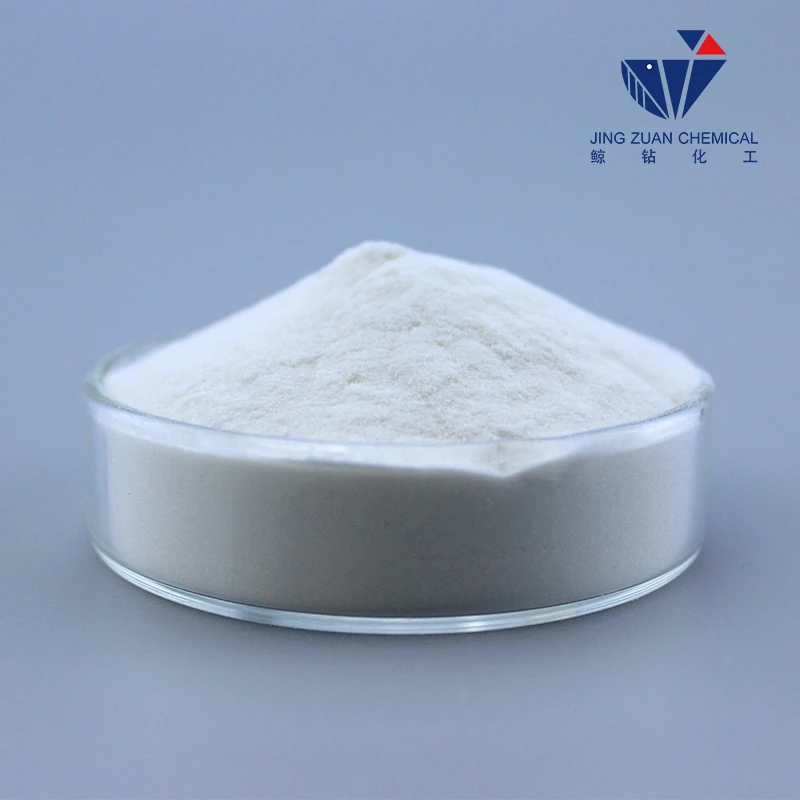
نوامبر . 16, 2024 23:47 Back to list
hydroxypropyl methyl cellulose
Hydroxypropyl Methyl Cellulose A Versatile Polymer in Modern Applications
Hydroxypropyl Methyl Cellulose (HPMC) is a synthetically derived cellulose ether, widely used in various industries due to its unique properties and versatility. First introduced in the early 20th century, HPMC has evolved significantly and now plays a vital role in applications ranging from pharmaceuticals and food production to cosmetics and construction materials.
Structure and Properties
HPMC is produced by the chemical modification of natural cellulose, which is obtained from plant fibers. The hydroxypropyl and methyl groups are introduced to the cellulose structure through a controlled substitution process. This modification results in a compound with unique properties such as solubility in water, high viscosity, and the ability to form gels.
One of the critical features of HPMC is its ability to retain water, making it an excellent thickening and binding agent. This property is particularly valuable in industries that require stability and consistency in their products. Moreover, HPMC is non-toxic, non-ionic, and hypoallergenic, which adds to its appeal in sensitive applications like pharmaceuticals and personal care products.
Pharmaceutical Applications
The pharmaceutical industry utilizes HPMC for various purposes, primarily as a binder and coating agent in tablet formulations. Its ability to form a controlled release matrix allows for the sustained release of active pharmaceutical ingredients, enhancing drug efficacy and patient compliance. HPMC is also commonly used in ophthalmic solutions, where its thickening properties can improve the viscosity and contact time of eye drops.
In addition to these roles, HPMC serves as a suspending agent in liquid preparations, helping to maintain a uniform dispersion of solid particles. Its favorable safety profile allows it to be used in many formulations without adverse effects, making it a popular choice in medication development.
Food Industry Utilization
hydroxypropyl methyl cellulose

In food applications, HPMC is prized for its thickening, emulsifying, and stabilizing properties. It is often used in gluten-free baking products, as it can mimic the texture and elasticity that gluten provides. As a food additive, HPMC can enhance shelf life and improve the mouthfeel of various products, including sauces, dressings, and dairy alternatives.
Additionally, HPMC serves as an effective fat replacer in low-fat products, supporting texture without substantial calorie contributions. The versatility of HPMC in food formulation aligns well with the increasing demand for healthier, low-fat, and gluten-free options among consumers.
Cosmetic and Personal Care Products
In the cosmetics and personal care industry, HPMC is utilized for its thickening and stabilizing properties in creams, lotions, and gels. It helps enhance the texture and feel of products while ensuring uniformity and preventing the separation of ingredients. Furthermore, HPMC is used in hair care formulations as a film-forming agent that offers styling hold without the stiffness often associated with traditional styling agents.
Moreover, its non-irritant and biodegradable nature makes it an ideal ingredient for eco-friendly products, resonating with the growing consumer demand for sustainable options in personal care.
Construction and Building Materials
HPMC's applications extend to the construction industry, where it is employed as an additive in cement, plaster, and tile adhesives. By improving workability, water retention, and adhesion properties, HPMC enhances the performance of building materials. The polymer's controlled release of moisture during the curing process helps prevent cracking and enhances the durability of structures.
Conclusion
Hydroxypropyl Methyl Cellulose stands as a testament to the incredible potential of cellulose-derived polymers. Its multifunctional properties and wide range of applications make it an essential ingredient across various industries, from pharmaceuticals to food processing and beyond. As innovation and research continue, the versatility of HPMC is likely to expand, offering new solutions to meet the evolving needs of consumers and manufacturers alike. Its role in promoting healthier lifestyles, sustainable practices, and effective formulations underlines its significance in contemporary applications.
-
Versatile Hpmc Uses in Different Industries
NewsJun.19,2025
-
Redispersible Powder's Role in Enhancing Durability of Construction Products
NewsJun.19,2025
-
Hydroxyethyl Cellulose Applications Driving Green Industrial Processes
NewsJun.19,2025
-
Exploring Different Redispersible Polymer Powder
NewsJun.19,2025
-
Choosing the Right Mortar Bonding Agent
NewsJun.19,2025
-
Applications and Significance of China Hpmc in Modern Industries
NewsJun.19,2025







